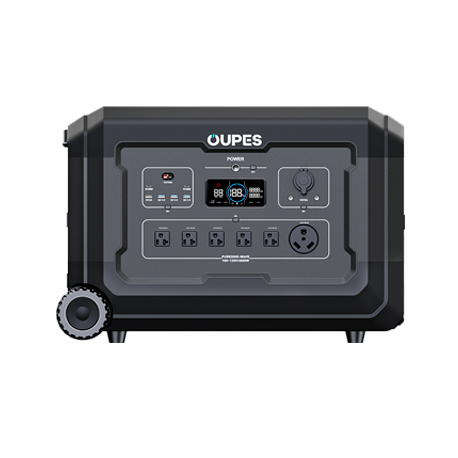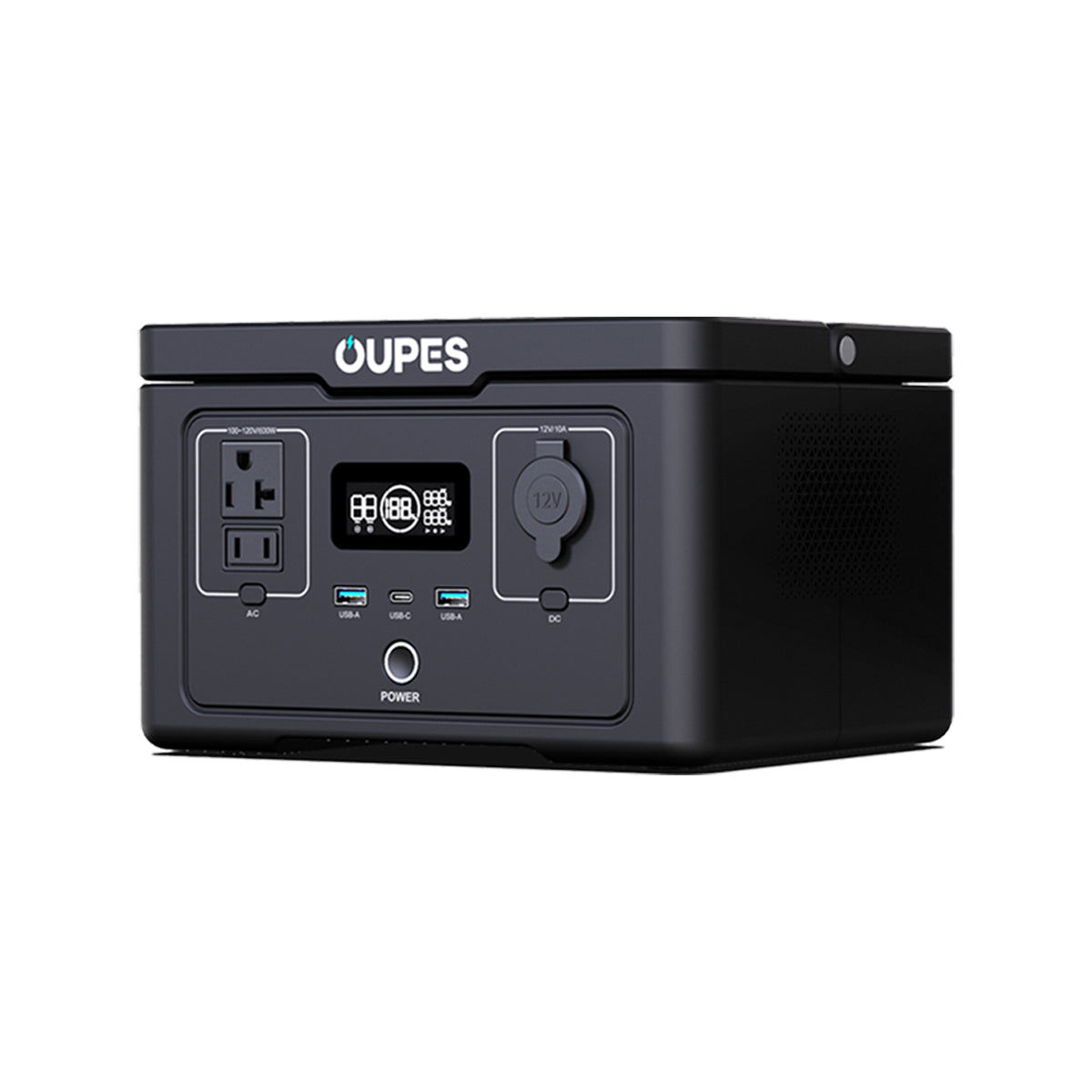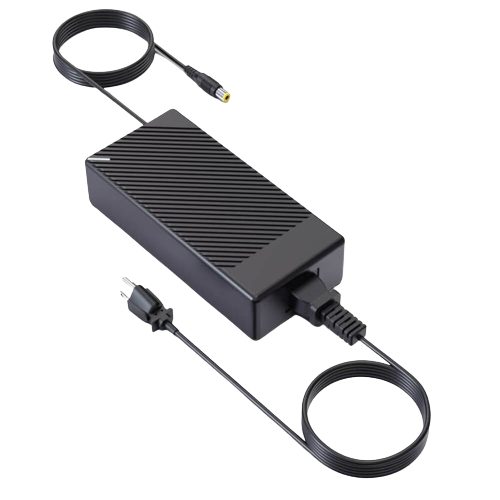Finding An E-Bike Power Station: Keep Your E-Bike Fully Functional
Portable power stations and solar generators are not only widely used in camping electricity, home backup electricity, and RV electricity, but also can be used to charge E-bikes. As the green travel lifestyle is recognized by more people, the portable power station, which is a more convenient charging method, is more of a choice.
Do you know what is a portable power station? If you are an e-bike rider, you know how important it is to keep your bike fully charged at all times. However, finding a power source can be challenging, especially if you are on the go.
That's where a portable power station comes in. In this article, we will discuss everything you need to know about finding an e-bike power station to keep your bike fully functional.
What Is An E-Bike Portable Power Station?
An e-bike power station is a portable device that can provide power to your electric bike. It can be charged using an AC outlet, DC carport, or solar panels.
With a power station, you can charge your e-bike wherever you are, whether you're on a camping trip, a long-distance ride, or simply need to charge your bike away from home.
What Is The Voltage Of An E-Bike Battery?
Before you choose a portable power station, it's essential to understand your e-bike battery. E-bike batteries come in different voltages, such as 24V, 36V, 48V, and 52V. The voltage of your battery will determine the type of power station you need.
The voltage of an e-bike battery can vary depending on the type and model of the bike. The most common voltages for e-bike batteries are 36V, 48V, and 52V.
The higher the voltage, the more power the battery can deliver to the motor. A 36V battery is suitable for casual riding on flat terrain, while a 48V or 52V battery is recommended for more demanding terrain or heavier riders.
Importance of choosing the right voltage:
The voltage of an e-bike battery determines the power output of the electric motor. A higher voltage battery can provide more power, which can result in higher speeds and better performance on hills and rough terrain.
However, higher-voltage batteries are also more expensive and heavier. It is important to choose a battery with the appropriate voltage for your riding needs.
Benefits Of An E-Bike Solar Charger:
If you are looking for a way to power your electric bike or scooter, a solar charger may be the answer. Solar chargers are a convenient and eco-friendly way to charge your e-bike while on the go. They are also portable, lightweight, and easy to use.
Having an e-bike portable power station brings numerous benefits for e-bike riders. Here are some of the advantages of using one:
Convenience:
One of the most significant advantages of an e-bike power station is the convenience it offers. With a power station, you can charge your bike on the go, making it easier to keep your e-bike operational even when you're away from home.
You don't need to worry about finding a charging point, and you can save time by not having to wait for your battery to charge.
Portability:
Another significant advantage of an e-bike power station is its portability. Most power stations are small and lightweight, making them easy to carry around.
You can take them with you on camping trips, long-distance rides, or any other outdoor activity where you need to charge your e-bike.
Versatility:
E-bike power stations are incredibly versatile, with multiple output ports that can be used to charge other devices such as smartphones, laptops, and tablets. This means you can use your power station as a backup power source for all your other electronic devices.
Environmentally Friendly:
Using an e-bike power station is an environmentally friendly option compared to using traditional fossil fuel-powered generators. Some e-bike power stations even come with built-in solar panels, allowing you to charge them using renewable energy.

How Many Watts Does It Take To Charge An E-Bike?
The amount of power required to charge an e-bike varies depending on the battery's capacity and the charger's efficiency. Most e-bike batteries have a capacity of between 500 and 800 watt-hours.
The Power Required to Charge an E-bike:
As mentioned earlier, the power required to charge an e-bike depends on the battery's capacity and the charger's efficiency. Let's assume that you have an e-bike with a 500-watt-hour battery capacity.
To charge this battery, you will need a power station that can provide at least 500 watt-hours of power.
Factors Affecting the Power Required to Charge an E-bike:
Several factors affect the power required to charge an e-bike, such as the type of charger, the battery's age, and the ambient temperature.
Some chargers are more efficient than others, which means that they can charge your e-bike battery faster and with less power.
Older batteries may require more power to charge, and extreme temperatures can affect the battery's performance and the amount of power required to charge it.
Charging Tips:
To ensure that your e-bike battery lasts longer and charges efficiently, it is important to follow some charging tips.
- Firstly, it is best to charge your e-bike battery when it is between 20% and 80% capacity.
- Secondly, avoid charging your e-bike battery in extreme temperatures, as this can affect the battery's performance.
- Thirdly, always make sure you have a good quality charger for your e-bike battery.
- Fourthly, remember that if you use a faulty charger or cable, it could damage your battery or result in poor charging results.
Choosing the Right Portable Power Station:
When it comes to choosing the right portable power station for your e-bike, there are a few things to consider. These include the battery capacity, output voltage, and charging time. Additionally, you should consider the weight and portability of the power station, especially if you plan to take it on long rides.
Types of Portable Power Stations
There are several types of portable power stations available, each with its unique features and benefits. These include lithium-ion power stations, lead-acid power stations, and solar generators.
Lithium-ion Power Stations:
Lithium-ion power stations are the most popular type of power station for e-bikes. They are lightweight, portable, and can provide high power output. They also have a longer lifespan than lead-acid batteries.
Lead-acid Power Stations:
Lead-acid power stations are an affordable option for e-bike riders. However, they are heavy, bulky, and have a shorter lifespan than lithium-ion batteries.
Solar Generators:
Solar generators are a great option for eco-conscious riders. They use solar panels to convert sunlight into electricity and can be charged on the go. However, they may not provide enough power for high-demand e-bikes.
If you choose the OUPES portable power station as a spare e-bike battery, you will get more convenience. They have portable power stations with 600W, 1200W, 1800W, and 2400W capacities. Recently, there is a new large-capacity product: 4000W portable power station Mega 5 released.
The following recommends a portable power station with a suitable capacity for your different e-bike usage scenarios:
l Basic charging needs:
For basic charging needs during short-distance trips, a 600W portable power station with a 595Wh stable LiFePO4 battery and 8 outputs for multiple devices should suffice.
l Longer rides:
For longer rides, an 800W portable power station with 992Wh of power and 1200W continuous output, along with a 1200W solar generator, can provide the necessary power for your e-bike.

l Extended outdoor trips or emergencies:
For extended outdoor trips or emergencies, a 2400W portable power station with a 2232Wh stable LiFePO4 battery, 14 universal ports, and 960W fast solar charging is recommended. It can also provide up to 3 days of emergency usage time on a single charge.
l Extreme power requirements:
For extreme power requirements, such as off-grid essential appliances or power tools, the 4000W portable power station is recommended.
It has a 10.08kWh expandable battery capacity, and its latest development of a 4000W sine wave inverter can support almost any high-power device, including microwave ovens, refrigerators, drills, and high-output lights.
How To Charge Your E-Bike Portable Power Station?
There are several ways to charge your e-bike power station. You can use an AC outlet, a DC carport, or solar panels. If you are using solar panels, you will need a solar generator that can convert sunlight into electricity to charge your power station.
Will Using A Portable Power Station Bring Environmental Impact?
While using a portable power station may have some environmental impact, it is much more eco-friendly than using non-renewable energy sources like gasoline.
Most e-bike power stations use lithium-ion batteries, which are more environmentally friendly than traditional lead-acid batteries.
Additionally, using a solar generator to charge your power station can reduce your carbon footprint and help protect the environment.
Conclusion:
In conclusion, a portable power station is an essential tool for any e-bike rider. It allows you to charge your bike wherever you are and keep it fully functional at all times. Whether you're on a camping trip or simply need to charge your bike away from home, a power station can provide the power you need to keep your bike running.
So, if you're looking for a reliable and eco-friendly way to charge your e-bike, consider investing in a portable power station or a solar generator.





















